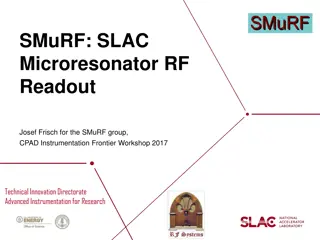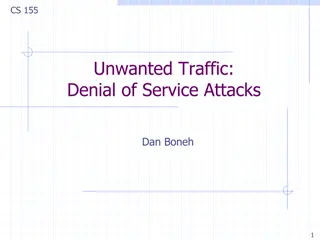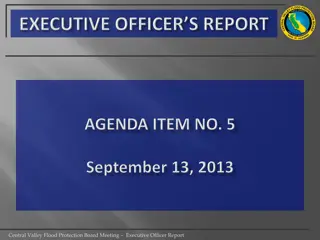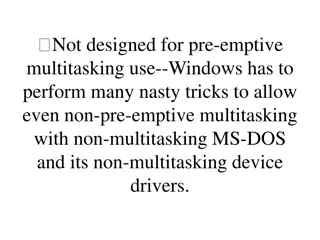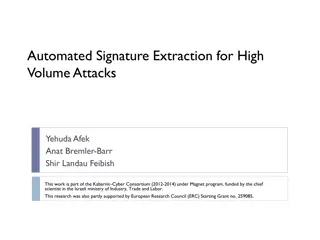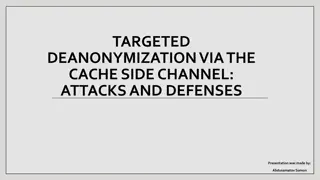
Enhance Cybersecurity with DoS Attack Mitigation Strategies
Explore practical defense mechanisms against Denial of Service (DoS) attacks at different network layers including Transport, Network, and Application layers. Learn how to safeguard web servers from SYN/FIN/RST floods, Smurf attacks, UDP floods, and SlowLoris attacks through effective countermeasures and disabling DoS attack defenses.
Download Presentation

Please find below an Image/Link to download the presentation.
The content on the website is provided AS IS for your information and personal use only. It may not be sold, licensed, or shared on other websites without obtaining consent from the author. If you encounter any issues during the download, it is possible that the publisher has removed the file from their server.
You are allowed to download the files provided on this website for personal or commercial use, subject to the condition that they are used lawfully. All files are the property of their respective owners.
The content on the website is provided AS IS for your information and personal use only. It may not be sold, licensed, or shared on other websites without obtaining consent from the author.
E N D
Presentation Transcript
Cybersecurity (Security+) and P4 Programmable Switches Overview Cybersecurity Labs Ali AlSabeh, Jorge Crichigno University of South Carolina http://ce.sc.edu/cyberinfra Western Academy Support and Training Center (WASTC) University of South Carolina (USC) Energy Sciences Network (ESnet) June 20th, 2023 1
Lab 8: Denial of Service (DoS) Attacks: SYN/FIN/RST Flood, Smurf attack, and SlowLoris 2
Attack Scenario Transport layer DoS: SYN/FIN/RST flood: the attacker uses the hping3 tool to perform a SYN/FIN/RST flood against the web server During the attack, the web server will fail to accept new sessions from legitimate users UDP flood: the attacker uses the hping3 tool to perform a UDP flood against the web server 3
Attack Scenario Network layer DoS: ICMP flood: the attacker uses the hping3 tool to perform an ICMP flood against the web server Smurf attack: the attacker uses the hping3 tool to launch a Smurf attack against the victim The attack will use the web server in the DMZ zone as the reflector 4
Attack Scenario Application layer DoS: SlowLoris: the attacker will use a custom script to perform a SlowLoris attack against the web server 5
Disable Linux DoS Attack Defenses Disabling reverse path forwarding on BR/FW Disabling SYN cookies on the web server Disabling TCP session caching on the web server 7
Transport Layer DoS Web server becomes unavailable for legitimate users Performing TCP SYN flood on the web server Performing UDP flood on the web server Performing TCP FIN flood on the web server 8
Network Layer DoS Inspecting the incoming and outgoing throughput rates on the web server Performing ICMP flood on the web server 9
Network Layer DoS Inspecting the incoming throughput rate and the CPU on the victim s machine Performing Smurf attack on the victim using the web server as the reflector 10
Application Layer DoS Testing the connectivity time to reach the web server Performing SlowLoris attack on the web server 11
Lunch break 1 hour - We will be back at 1:00 PM PT for Office hours 12






